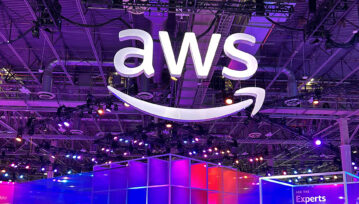Connectria Helps Small Energy ISV Compete with the Big Names
Connectria
Author
Date
August 27, 2019

The widespread acceptance of SaaS applications has made it possible for small organizations to enter the market in a big way. Nevertheless, competing with huge, well-established competitors can be a challenge. In this interview, David Bridge, President/Partner at Convergence Solutions LLC talks to us about how Connectria helped his organization successfully migrate its on-prem applications to a SaaS delivery model.
David, can you start by telling us a bit about your company, the markets you serve, and the competitive landscape of those markets?
David: Sure. We’re a very small software vendor specializing in the natural gas and electric utility industry. Right now, we have some really specific niche products that help utilities and natural gas suppliers manage their gas flow up and down the interstate pipelines. We’re also getting into the electric distribution side with some larger electric settlement solutions.
One of our challenges over the last ten to fifteen years is that we’re small, but we’re constantly competing against the likes of Oracle, IBM, Wipro, large consulting firms, and so on. We have products that nobody else has, but being small, it’s hard for us to establish ourselves even though we’ve been around for a long time.
We went with Connectria because of the reliability and the service we get from them. I know they stand behind what they do. We’re always trying to figure out the best way to position ourselves, to market ourselves. I want to be able to say ‘Yeah, we’re small, but we’ve got the strength of this organization behind us.’
Before we get into your relationship with Connectria, tell us about why you decided to offer your software as a SaaS solution.
We were actually at a client’s offices, getting ready to deploy our system on-premises. I was speaking to one of the IS managers, and she started complaining about her IT group. I sort of off-handedly said, ‘We could host it for you,’ without thinking a whole lot about what we would need to do to make that happen. She said, ‘let’s do it!’
When I walked out of that client’s office, I had no idea how I was going to deliver, so I just went to the web and started making a list of organizations I thought could help. I added all the big names like Rackspace and Connectria to that list, but there were some smaller players, too. Then I started calling around.
I initially culled the list based on the quality of the marketing and sales response because, if that wasn’t good, I didn’t figure their support would be much better. I still remember the initial person I spoke to. She helped me work through the process, and it’s been a great partnership ever since. Connectria’s support and response is unbelievable. I can’t speak highly enough about it.
Sounds like you spoke to systems engineers as well as salespeople from Connectria as you were doing your initial research?
That’s right. One of the most important factors in selecting Connectria was that from the beginning we had direct communication with the entire team. They answered every question we asked and ultimately delivered on everything they said they would provide.
This level of access was unique to Connectria and important to our selection process. We had a few meetings in the beginning when we didn’t know what we were getting into. We needed guidance when it came to security, networking, how to transfer secured files…the entire setup. We were going in blind. The engineers helped us figure out the infrastructure that would work best for us.
Once I was comfortable with the people I was dealing with, I leaned on Connectria 100 percent to help me design a solution and to help me grow and evolve it into what we have today.
Other than responsiveness, what else were you looking for in a partner?
Primarily, we were looking for a managed services partner who could complement our technical team. I’ve mentioned that we really didn’t know how to manage a SaaS environment, so we wanted a partner we could offload the management of the resources so our team could focus on product development and internal technical support.
Our chosen provider had to have the expertise necessary to manage and monitor critical systems and to support a customer-facing environment. They needed to be able to act fast to address issues as they arise, not after the fact. And, for us to sell our SaaS model, we needed to assure potential clients we were partnered with a hosting company that had experience managing workloads for clients of similar size and in the same industries, and most importantly, could handle our reliability and security requirements.
Last but not least, with our clients being in the energy industry, it was also crucial the hosting partner we selected was responsive to our needs 24/7 without communication and location barriers. For us, that meant a US-based partner.
Let’s dig into that a bit. Is there a regulatory requirement in the energy industry that says workloads need to be based in the US?
There are some regulatory requirements regarding moving workloads overseas. Our clients all ask where the data is located and whether those resources are shared with other clients. So that’s part of it.
To me, being in the IT world and working with vendors all over the world, I know how challenging it can be to work with support teams you’ve never met, living and working in a different part of the world. I needed to be able to support this system 24×7, so I needed to be sure there would be no communication barriers, no location barriers for my clients, and no barriers to being able to contact people. This isn’t anything against foreign providers, but we needed to be sure we knew who was standing behind our solution.
Do any of your competitors choose an overseas provider? I would think the latency issues alone would make them want to keep the data closer to home.
That’s true, but it’s not just about where the data is stored. They could be a US-based hosting company with overseas support facilities. The inevitable communication barriers that crop up when you’re trying to get support from a group in another time zone is one of the issues I was referring to earlier.
But, even though you’re not housing your data overseas, there are situations where the support staff needs to access it for troubleshooting purposes. We wanted to know who might be touching our clients’ data, and we wanted to be able to have direct, timely communication with them.
Switching gears a bit with our final question, You mentioned offline that you’re considering engaging Connectria for SQL Server database administration. Is that because you’re having challenges finding and retaining the right people?
No, our challenge is more being able to support people full time in our small organization. We may have a need for DBA resources, database tuning, advice on database configurations, and the like. We don’t necessarily want to bring on a fulltime DBA because it’s not a fulltime need. We prefer to rely on a managed service provider if we can.
Not having to focus on the hiring and managing of this aspect of IT helps us focus on our services and our software. Once a customer is a customer and they’re confident in how you’re handling their data, they don’t think too much about your SaaS environment unless there is a problem. Instead, they judge your capabilities on the software you create and the support you provide because that’s front and center in their world. If we can focus more on what our clients see while letting Connectria focus on what they don’t see, we can add greater value and build our business as well.
Keep Reading
Prepare for the future
Tell us about your current environment and we’ll show you the best path forward.
Fast track your project. Give us a call.






